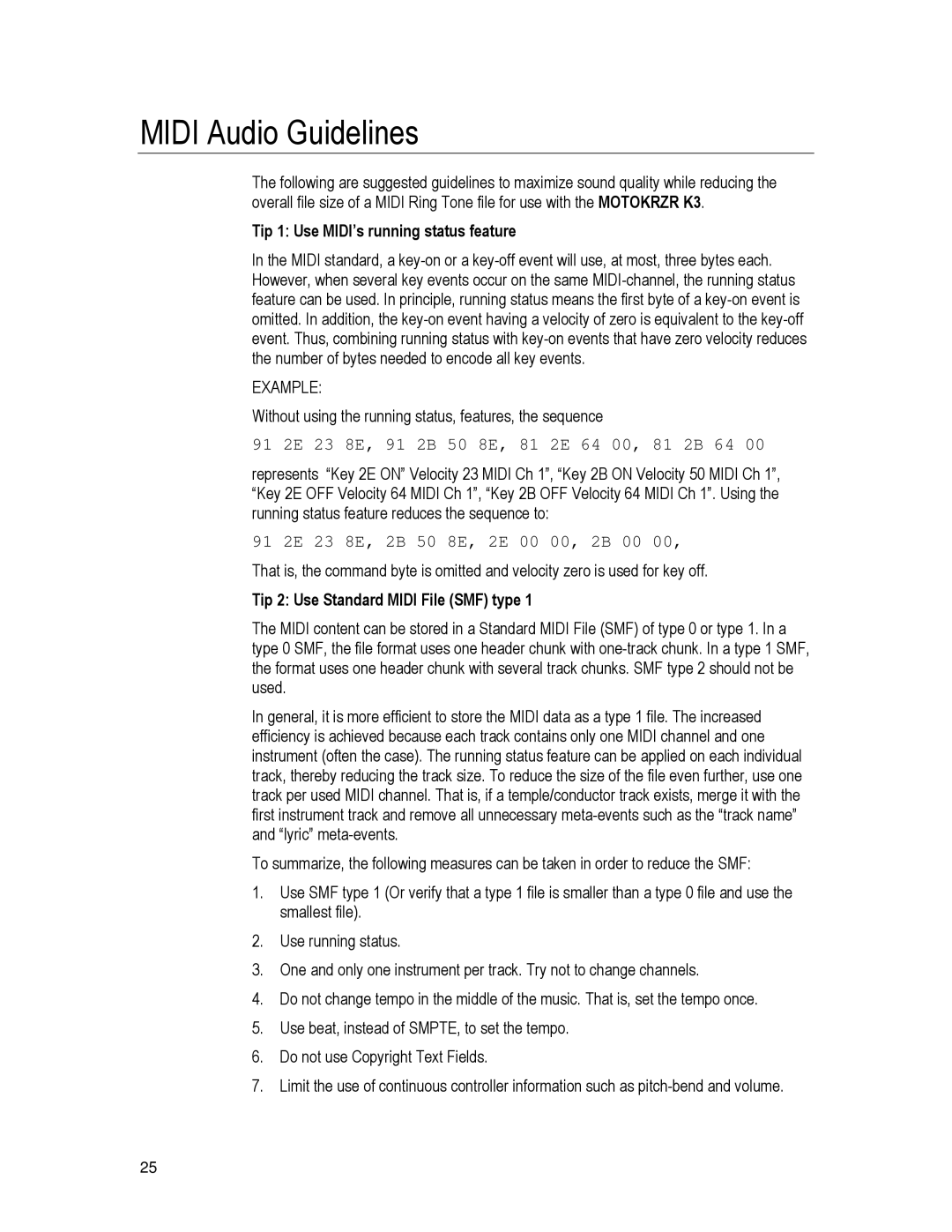MIDI Audio Guidelines
The following are suggested guidelines to maximize sound quality while reducing the overall file size of a MIDI Ring Tone file for use with the MOTOKRZR K3.
Tip 1: Use MIDI’s running status feature
In the MIDI standard, a
EXAMPLE:
Without using the running status, features, the sequence
91 2E 23 8E, 91 2B 50 8E, 81 2E 64 00, 81 2B 64 00
represents “Key 2E ON” Velocity 23 MIDI Ch 1”, “Key 2B ON Velocity 50 MIDI Ch 1”, “Key 2E OFF Velocity 64 MIDI Ch 1”, “Key 2B OFF Velocity 64 MIDI Ch 1”. Using the running status feature reduces the sequence to:
91 2E 23 8E, 2B 50 8E, 2E 00 00, 2B 00 00,
That is, the command byte is omitted and velocity zero is used for key off.
Tip 2: Use Standard MIDI File (SMF) type 1
The MIDI content can be stored in a Standard MIDI File (SMF) of type 0 or type 1. In a type 0 SMF, the file format uses one header chunk with
In general, it is more efficient to store the MIDI data as a type 1 file. The increased efficiency is achieved because each track contains only one MIDI channel and one instrument (often the case). The running status feature can be applied on each individual track, thereby reducing the track size. To reduce the size of the file even further, use one track per used MIDI channel. That is, if a temple/conductor track exists, merge it with the first instrument track and remove all unnecessary
To summarize, the following measures can be taken in order to reduce the SMF:
1.Use SMF type 1 (Or verify that a type 1 file is smaller than a type 0 file and use the smallest file).
2.Use running status.
3.One and only one instrument per track. Try not to change channels.
4.Do not change tempo in the middle of the music. That is, set the tempo once.
5.Use beat, instead of SMPTE, to set the tempo.
6.Do not use Copyright Text Fields.
7.Limit the use of continuous controller information such as
25
